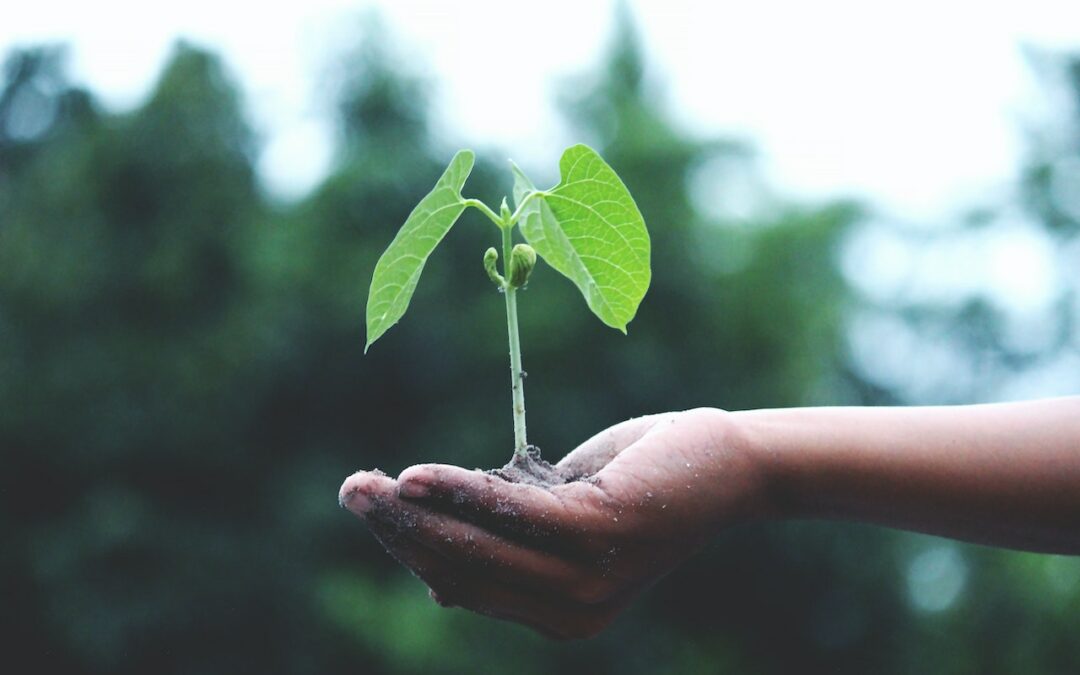
Youth Test Innovations to Increase Water-Use Efficiency and Build Climate Resilience in Central Asia
Youth Test Innovations to Increase Water-Use Efficiency and Build Climate Resilience in Central Asia
jschoshinski
Thu, 06/13/2024 – 15:24
The USAID Regional Water and Vulnerable Environment Activity is strengthening transboundary cooperation on water resources and building resilience to climate change in Kazakhstan, the Kyrgyz Republic, Tajikistan, Turkmenistan, and Uzbekistan. By engaging school children in piloting green technologies for efficient water use, the Activity is helping youth spark the uptake of innovative practices in their communities to increase water security and climate change adaptation in Central Asia.
Image
These Green Patrol members at Bekmenbetov School in At-Tam, Kyrgyz Republic, chose to install drip irrigation and a poly-greenhouse at their school to conserve water while growing nutritious food to be used in school meals.
Photo Credit: USAID Regional Water and Vulnerable Environment Activity
The Challenge
Five major rivers flow through Central Asia, nourishing and connecting people and ecosystems along their routes. Most of the region is arid or semi-arid with a highly variable climate, making all five countries susceptible to climate change. Increasing temperatures and shifting rain patterns are accelerating glacial melt and reducing snowpack, which are critical sources of fresh water in the region. If climate change continues on its present course, river flow will ultimately decline in the coming decades, resulting in water deficits during the growing season.
The region has already experienced the effects of poor water management. The Aral Sea has lost 90 percent of its water over the past 50 years due to the overuse of water for agricultural irrigation. In 2020, the combined population of the five Central Asian countries surpassed 75 million, and according to UN projections, it will reach 95 million by 2050, driving increased demand for water, food, and energy. The combination of climatic and hydrological changes and rapid population growth is pushing the region towards water insecurity.
Tapping Youth-led Innovation
To address the need for efficient water use and environmental protection in Central Asia, USAID is working with governments, academia, civil society, and education partners to demonstrate innovative methods to reduce water consumption and adapt to climate change. Over 50 percent of the population in Central Asia is under 30 years old. With a high capacity for scientific and technological innovation, these young people are creating opportunities for resilient and sustainable development.
The Activity partners with youth-focused non-profit organizations in the Fergana Valley, a once lush and fertile region that extends across parts of eastern Uzbekistan, the Kyrgyz Republic, and Tajikistan. To counter the effects of increasing water scarcity in the region, the Activity provided grants to three organizations to promote environmental stewardship within their communities. Together, these organizations have formed 56 Green Patrols across 31 school districts with a combined membership of more than 1,181 high school students, over half of whom are girls.
In a unique transboundary collaboration, these Green Patrols research low-cost technologies to improve water-use efficiencies. They select methods to pilot test technologies through a learn-by-doing approach involving teachers, families, local authorities, and community members. They also have a lot of fun along the way.
Image
In this Green Patrol activity, teams of students add dirt to a bottle of clean water and then filter out “contaminates” into a second bottle to learn more about water quality.
Photo Credit: USAID Regional Water and Vulnerable Environment Activity
Learning Lessons for Life
The Green Patrols in all three countries collaborated to develop common training materials focused on their shared challenges in the Fergana Valley. The Green Patrol organizers trained 51 teachers in the service area on how to use these materials in the classroom to cover climate change, pollution, water security, climate-smart agriculture, and other topics.
Teachers deliver these lessons through a unique combination of games, competitions, and practical applications. The students work collaboratively to select the topics they want to explore and then study those topics in settings such as riverbanks and community gardens. In the Kyrgyz Republic and Uzbekistan, some students are growing rose bushes and vegetable gardens using a simple drip irrigation system sourced by nearby rainwater collection tanks. At other schools, students are testing solar-powered water pumps and poly-greenhouses. In Tajikistan, Green Patrols have organized clean-up days along the banks of the Syr Darya River and interactive public demonstrations on simple water purification techniques, awarding prizes to the most effective teams.
Image
Youth Group on Protection of Environment trained teachers from six districts in Khujand, Tajikistan, to supervise Green Patrols and help the students generate ideas for environmental activities and awareness campaigns.
Photo Credit: USAID Regional Water and Vulnerable Environment Activity
Green Patrols also provide opportunities for peer-to-peer exchange through summer camps in each country. In June 2023, the Activity organized an in-person conference in Tashkent, Uzbekistan, where young people could share ideas and experiences from working with fellow students and local communities. Together, they identified best practices for future Green Patrols and set the stage for a greener future in the region.
Image
Photo Credit: Climatelinks
Engaging Youth for a Brighter Future
Green Patrols demonstrate how youth can influence local communities and authorities to adopt water-efficient technologies and increase environmental protection. As Anara Eginaliyeva, Director of FTI Bishkek (an Activity grantee), points out, “Too often students feel there is nothing they can do to create change in their worlds. Green Patrols help them understand that they have an important role to play.”
Engaging youth is critical to changing practices within communities and building a brighter future. Support for Green Patrols has grown in the relatively short time they have been active, and all the schools involved intend to continue and expand the program beyond the current support from USAID. This youth-led movement has enormous potential for the entire Central Asia region as countries navigate the impacts of climate change.
To read more about USAID in Central Asia and transboundary integrated water resource management, please visit and join the Activity’s Facebook page. You can find further tools and research on the Activity’s Community of Practice platform hosted by the Regional Environmental Centre for Central Asia.
Teaser Text
The USAID Regional Water and Vulnerable Environment Activity is helping youth spark the uptake of innovative practices to increase water security and climate change adaptation.
Publish Date
Thu, 06/13/2024 – 12:00
Author(s)
Daphne Hewitt
Christopher Butler
Hero Image
Image #2_Rose garden.JPG
Blog Type
Blog Post
Strategic Objective
Adaptation
Integration
Mitigation
Region
Asia
Topic
Adaptation
Climate-Resilient Agriculture
Education
Gender and Social Inclusion
Locally-Led Development
Training
Water Management
Youth
Country
Kazakhstan
Kyrgyz Republic
Tajikistan
Turkmenistan
Uzbekistan
Sectors
Gender and Social Inclusion
Water and Sanitation
Show Download Link
Off

Perth tops Australian cities in global sustainability ranking
Global design and consultancy company Arcadis has shared the results of its most recent Sustainable Cities Index (SCI), revealing a pressing need to tackle climate change and other sustainability challenges.
Amsterdam topped the Index, closely followed by Copenhagen (3rd) and Munich (5th). The report illustrated the stark contrast between these sustainable European cities and US powerhouses such as New York (48th), Boston (56th) and Washington DC (65th).
All four German cities included in the index — Frankfurt, Munich, Hamburg and Berlin — claimed spots in the top 10, thanks to achievements in water sanitation and waste management, and low greenhouse gas emissions.
The report’s publication on 13 June coincides with there being nearly 2000 days until the 2030 deadline for achieving the UN sustainable development goals (SDGs). These 17 sustainable development goals include climate action; affordable and clean energy; sustainable cities and communities; and industry, innovation and infrastructure.
The Arcadis Sustainable Cities Index ranks 100 global cities across three pillars of sustainability: Planet, People and Profit. Comprising 67 different metrics to evaluate urban sustainability, the 2024 index is the sixth edition of the report since its inception in 2015.
Key data points include air pollution, waste management and investment in low carbon infrastructure (including renewable energy and sustainable transport), as well as factors such as economic performance, social equity and resilience to natural disasters.
For the first time, Arcadis has added a fourth pillar to the index — ‘Progress’ — measuring changes over the last decade. When considered alongside the other pillars, it provides insights into a city’s future trajectory and emphasises the importance of continuous advancement to achieve the SDGs.
Australian city rankings
While European cities dominate the Index’s upper rankings, Australian cities performed relatively well by sustainability criteria: Perth came in at 25 in the global rankings, followed by Melbourne at 32, Sydney at 33 and Brisbane, which will host the Olympic Games in eight years, at 38.
Of the Australian cities in the Index:
Perth’s relatively high ranking is underpinned by strong rankings (compared to Australian peers) in Profit and Progress, though the city underperformed on criteria related to People and Planet.
Melbourne’s progressive approach to the People pillar and ranking on Profit and Progress pillars offset its relatively poor performance on the Planet pillar.
While Brisbane is the lowest-ranked Australian city overall, it ranks second-highest (among Australian cities) for Progress, suggesting the city is improving rapidly on key measures as the Olympics approaches.
Sydney’s overall ranking was underpinned by a strong performance against key criteria in the People pillar.
Commenting on the Australian results, Arcadis Cities Director for Sydney Stephen Taylor said: “Australians and their city leaders tend to look at the relative performance against their Australian competitor set. But while the four Australian cities in the survey ranked between 25 and 38, the scoring differences between them on key criteria are relatively small — Australian cities are roughly equivalent when looked at globally.
“The value of this report is to reflect on Australian cities’ performance against their international competitors as we compete for global talent. The international comparison shows there is room for improvement on many criteria associated with the world’s most sustainable cities.”
How cities ranked on Planet, Profit and Progress
While all four Australian cities ranked lower on the Planet pillar compared with their overall ranking, that was not the case globally, with eight of the highest-ranking cities for Planet also securing positions in the overall top 10. The Planet pillar comprises metrics including sustainable energy systems and low-emission transport, suggesting these should be focal points for cities looking to effect meaningful change.
According to this year’s Index, high performance on the Profit metric does not necessarily come at the expense of environmental sustainability, with the report emphasising how a thriving economy should support investment in infrastructure, alternative energy sources, green initiatives and social programs. Amsterdam, the most sustainable city of 2024, ranked at the top of the Profit pillar, where it excels in income and living standards, employment and transport infrastructure.
When it comes to progress over the last decade, many European cities have continued to make significant strides — despite their highly sustainable starting points — to cement their position at the top of the index. Amsterdam, Rotterdam, Warsaw, Copenhagen, Frankfurt, Munich, Hamburg and Berlin have all sustained momentum to feature in the top third of the Progress pillar and the top third of the index overall. This is thanks to a commitment to renewable energy production, as well as socio-economic factors such as health care and female labour force participation.
Although ranking low overall, the dominance of Asian cities such as Jakarta, Wuhan and Shanghai at the top of the Progress pillar demonstrated that, in cities with limited prior sustainable infrastructure or practices, early steps can make a big impact in generating momentum for further advancements.
“Cities play a critical role in advancing the sustainable development agenda. However, our progress assessment shows that a lot more needs to be done to meet the Sustainable Development Goals by 2030,” said John Batten, Arcadis Global Cities Director.
“With just 2000 days to go, the challenge is to keep pushing the boundaries of innovation. Whether that’s by scaling up renewable energy initiatives, integrating climate considerations into infrastructure planning, improving mobility through intelligent traffic management or supporting the retrofit of existing buildings through planning and investment, there are always areas to improve on.
“As the 2030 deadline approaches cities must build on their successes, identify areas for progress and foster collaboration to address challenges with ever greater urgency and determination,” Batten concluded.
The full report can be downloaded here.
Image credit: iStock.com/NeoPhoto

The week in climate policy: 4 updates you need to know
New York is charging fossil fuel companies for climate change; California sues Big Oil for greenwashing and misleading consumers.

Aspen Golann’s Elegant Brooms and Brushes Take a Playful Approach to Woodworking
For Aspen Golann, determining the function of an object is the perfect creative constraint for beginning a project. Working almost entirely by hand in her New Hampshire studio, she carves and sands wooden furniture, spoons, candlesticks, and other goods with a playful twist.
“Group Work,” for example, contains a single handle that forks into five heads, while even more minimal designs like the “Double Loop Brush” elegantly stacks two perfectly round spheres atop one another. More
Do stories and artists like this matter to you? Become a Colossal Member today and support independent arts publishing for as little as $5 per month. The article Aspen Golann’s Elegant Brooms and Brushes Take a Playful Approach to Woodworking appeared first on Colossal.
